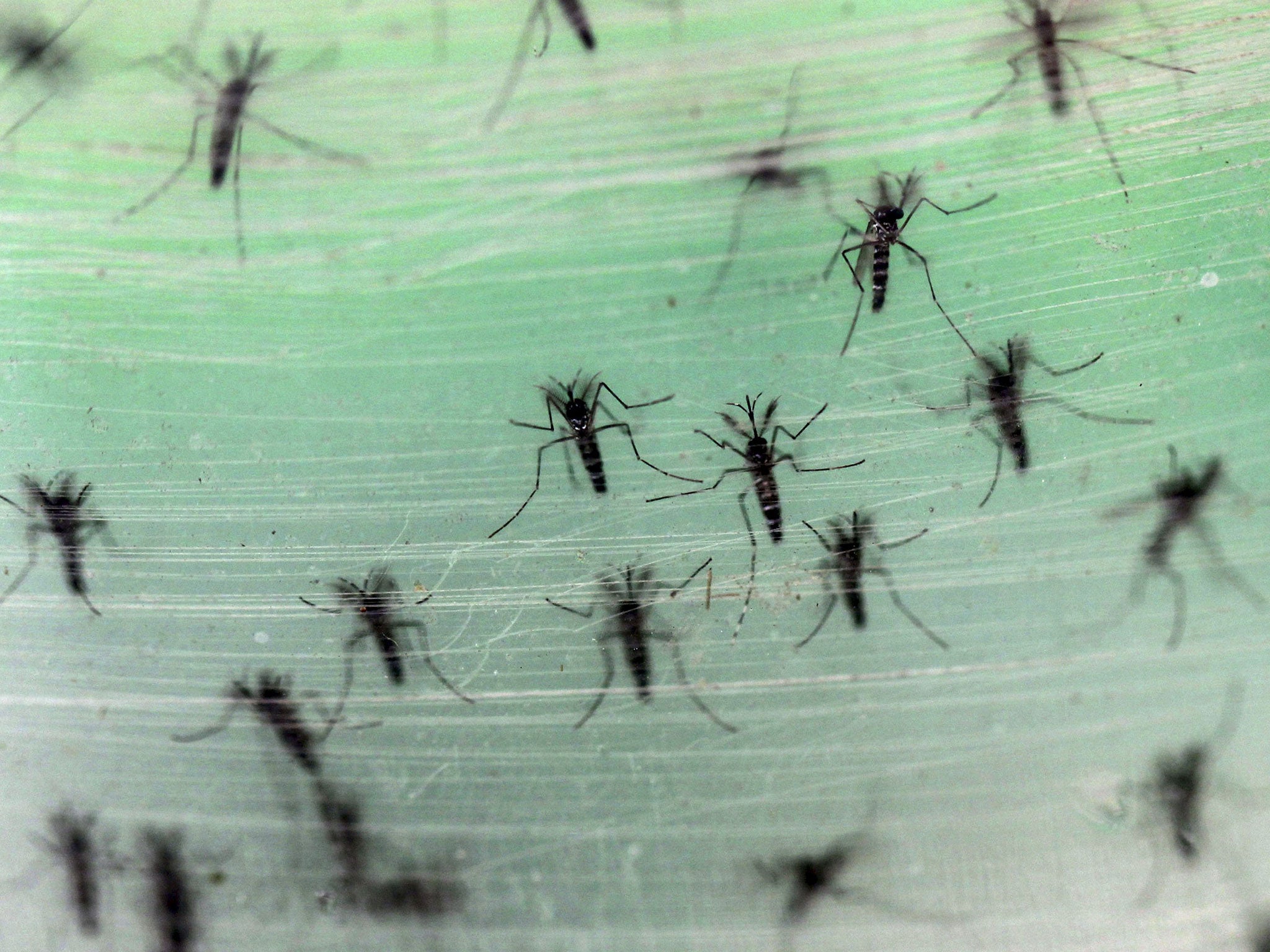'Gene drives': Government science advisers expected to investigate potentially dangerous GM organisms
The technology has the potential to prevent the spread of insect-borne diseases and crop pests as well as curb the damage done by invasive species

Government science advisers are expected to investigate a new method of creating “supercharged” genetically modified (GM) organisms that some scientists fear might cause havoc if released without adequate safeguards into the wild.
A technology called “gene drives” accelerates the spread of GM genes within populations of fast-reproducing species, such as mosquitoes, and has the potential to prevent the spread of insect-borne diseases and crop pests as well as curb the damage done by invasive species.
However, as The Independent revealed, the US National Academy of Sciences has begun a wide-ranging review of genes drives and a group of 27 leading geneticists have called for strict controls on how the technology is used in laboratories in order to minimise the risks of an unintended escape with harmful consequences.
In Britain, two Government scientific advisory bodies have identified gene drives as a striking new development in genetics that has potential benefits as well as risks, experts have told The Independent.
Gene drives are likely to be on the future agendas of the Synthetic Biology Leadership Council of the Department of Business, Skills and Innovation and the Advisory Committee on Releases into the Environment (Acre), which oversees filed trials of GM organisms as part of the Department for Environment, Food and Rural Affairs (Defra).
“I anticipate that we’ll be looking at it. I’m aware of the technology but we’ve not actually discussed it yet, but I’m sure we will,” said Professor Rosemary Hails of the Centre for Ecology and Hydrology who chairs Acre.
A Defra spokesperson said: “We have never received an application to release a GM organism based on so-called ‘gene-drive’ technology into the environment in the UK – any such application would be subject to a rigorous, independent risk assessment.”
The Synthetic Biology Leadership Council, which is overseeing the Government’s strategy for fostering the development of the nascent science of synthetic biology, is also expected to include gene drives on the agenda of future meetings, according to Professor Joyce Tait of Edinburgh University, who sits on the leadership council and is also a member the US National Academy of Sciences’ committee on gene drives.
“I expect every synthetic biologist will be taking an interest in this area, there are clearly enormous potential benefits and it’ll be a pity if we just concentrate on the risks,” Professor Tait said.
Researchers have likened gene-drive technology to a nuclear chain reaction because it allows GM genes to be amplified within a breeding population of insects or other animals without any further intervention once the gene-editing trait has been initially introduced.
Laboratory experiments on fruit flies have shown that a modified gene introduced into one individual fly takes just a few generations to “infect” practically every other fly in the breeding population, in defiance of the normal rules of genetics which dictate a far slower spread.
Helen Wallace of the pressure group GeneWatch UK said she has major concerns over commercial pressures to de-regulate gene-editing techniques which would leave gene drives open to widespread use without proper oversight.
“Even well-intentioned uses could have serious adverse consequences. For example, mosquitoes genetically engineered to be resistant to viruses could lead to viruses evolving in response to become more virulent. This could lead to the uncontrolled spread of serious killer diseases,” Dr Wallace said.
However, proponents of the technology said that gene drives could benefit human health by reducing insect populations that spread human diseases, such as mosquitoes that transmit malaria, dengue, yellow fever or Lyme disease.
They could also be used to reverse the mutations that make pests resistant to agricultural pesticides, or they might be used to spread genetic traits within populations of invasive species to help kill them off, such as making the skin of cane toads introduced into Australia non-toxic to indigenous predators.
A group of 27 leading geneticists has written in this week’s issue of the journal Science that scientists should be open and transparent about their research on gene drives, which they believe could have major benefits in health, agriculture and conservation.
“If we’re right about this, it’s a powerful advance that could make the world a much better place, but only if we use it wisely,” said Kevin Esvelt of the Wyss Institute at Harvard Medical School in Boston, one of the 27 researchers.
How do gene drives work?
Gene drives rely on a “cassette” of gene-editing DNA being inserted into one chromosome on an inset or other organism. This then allows the genetically-modified element introduced with the cassette to jump from one chromosome to another, resulting in the spread of a GM trait in a fast-reproducing species living in the wild.
Some scientists fear this could be misused by rogue states or terrorist groups with access to a genetics lab to create GM superorganisms that could spread in the wild and threaten human health or economically important crops.
As David Gurwitz of Tel Aviv University in Israel has said: “Just as gene drives can make mosquitoes unfit for hosting and spreading the malaria parasite, they could conceivably be designed with gene drives carrying cargo for delivering lethal bacterial toxins to humans.”
Other scientists fear that introducing gene drives into insects or other organisms in the wild for a beneficial purpose could simply lead to unintended, harmful consequences that cannot be predicted.
Subscribe to Independent Premium to bookmark this article
Want to bookmark your favourite articles and stories to read or reference later? Start your Independent Premium subscription today.

Join our commenting forum
Join thought-provoking conversations, follow other Independent readers and see their replies